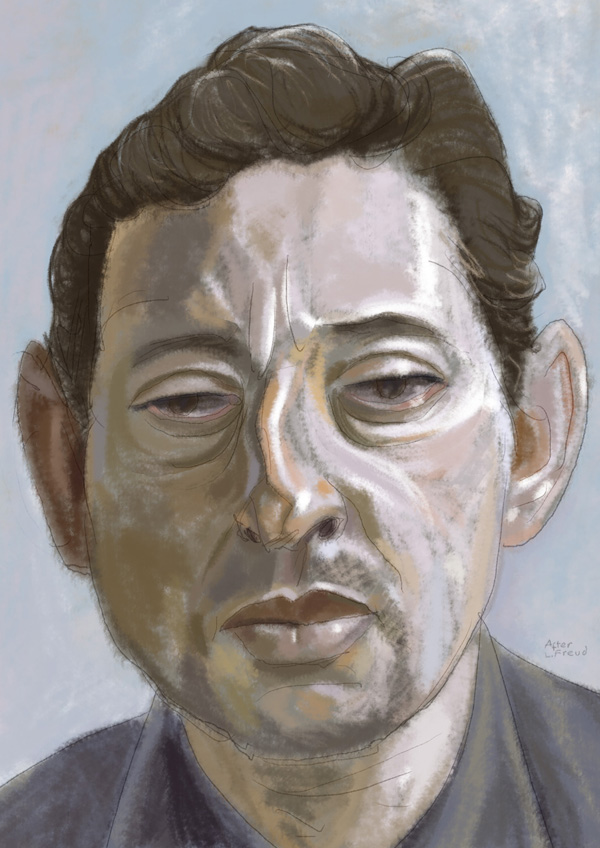
Although little-known in the UK, Léo Ferré was a hugely influential musician in the world of French chanson. Unlike his contemporaries Jacques Brel and George Brassens, Ferré’s songs were rarely translated into English. However a new album, Love and Anarchy: The Songs of Léo Ferré by Peter Hawkins features 19 English translations which faithfully preserve the meaning of Ferré’s original lyrics. (If you want a rare chance to hear these songs live, Peter is performing at Colston Hall 2, Bristol, on Thursday, London and Sheffield soon after.)
Considering that chanson typically follows the rhythms of French language, a good English translation can be difficult (as demonstrated by Seasons In The Sun, a bathetic adaptation of Brel’s Le Moribond which was a hit for Westlife). Fortunately, Peter is well-equipped for the task, having recorded his own songs in French in 1960s Paris and published the first academic study of chanson. I worked with Peter on the CD artwork for (on and off) one year, but he has been perfecting these translated songs for 40.

The artwork drew on two main sources; the cover designs of Ferré’s back catalogue and poster art from the May 1968 protests.
We looked at several key Ferré albums, but by far the strongest influence was the simple red and black cover of 1970 double album Amour Anarchie.

The hand-drawn text on Peter’s record comes directly from studying an amazing book in his collection, Mai 68, which reproduces the simple and powerful posters made by the protesting students and workers who brought de Gaulle to his knees. Ferré was a dedicated anarchist and this side of him needed to be represented in the cover design.

 These posters also informed the hand-printed feel I wanted for the artwork.
These posters also informed the hand-printed feel I wanted for the artwork.
I don’t often have the opportunity to work with a musician so closely and this experience has been a lot of fun. Getting early access to the music was – of course – exciting, and listening to it while working on the design was very helpful. But it was also fascinating to watch the project develop. I have seen how important the contributions of Peter’s collaborators have been, especially co-producer/mixer/arranger Jez Butler‘s. I have also been appalled by the number of hoops a musician must jump through to publish their own work! The concert on Thursday will be the crescendo at the end of all their hard work, as well as being the first opportunity to buy the CD. (I’ll add online shop details here when I know them)
POSTSCRIPT: I should add that Ferre is not the first chanson hero I’ve drawn. Serge prints are still available in my shop!








 These posters also informed the hand-printed feel I wanted for the artwork.
These posters also informed the hand-printed feel I wanted for the artwork.